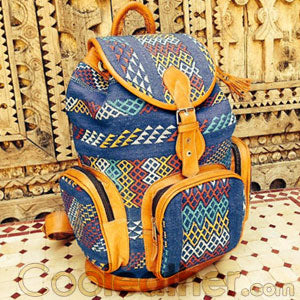
The latest climate change data makes it very clear that we, the world’s keepers, need to start making some serious changes. Continuing to live as we have for the past 100 years may mean disastrous droughts in the United States, extreme heat in Canada, and an up to 50 percent reduction in crop yields in farming communities around the world. Without intentional change, we will destroy the earth.
This is a global problem, and we all have to do our part to contribute to the solution. Here at Cooleather.com we’re committed to preserving the world’s natural resources, sharing in the responsibility of the planet’s care, and doing everything we can to push humanity forward. One of the ways we’re doing this is by using agave silk in our bags. Never heard of agave silk? Read on to learn more about this sustainable treasure.
What is agave silk?
Agave silk is sometimes referred to as sabra, cactus silk or vegetable silk. No matter what you call it, it comes from the same place: the agave. Often wrongly labeled a cactus because of its wide fleshy leaves and sharp points, the agave is actually a drought and heat tolerant succulent plant. There are approximately 200 species in the Agavacea plant family, most of which are native to the southern United States, South America and Africa. And this beautiful green gem is one of the most sustainable plants in the world.
How is agave silk made?
Agave is planted by hand and sown in fields where no chemical fertilizers are used. And because the fields are hand weeded and worked daily by actual farmers, herbicides are generally not needed either.Unlike many commercial silk fibers that are manufactured in large factories by automated appliances and then machine-drenched in chemical dyes, agave silk is made the old fashioned way. From the planting to the harvesting to the spinning, agave production is a hands-on centuries old practice.
Once plants have matured, the sword-shaped agave leaves are harvested with long machete-styled blades. Leaves are cut individually from the plant and then massaged with a heavy rolling pin-like tool that separates the fibers into individual strings. Those fibers are then washed and hammered into thin strands. The soft, silky strands are now ready to be twisted into threads which can then be fashioned into textiles, rugs, clothing and other items courtesy of a loom that is run by foot pedal and skilled craftsmen. Threads handspun on looms are sometimes interwoven with wool to create kilim, a durable rug-like textile that we use in our backpacks.
The many uses of agave
Agave silk is 100 percent vegetable fiber that easily integrates into a number of goods. You may even have agave products in your home without realizing it. Agave is used in the production of the following:

- Rope
- Paper
- Carpets
- Dartboards
- Fabric
- Wall hangings
- Twine
- Filters
- Mattresses
- Baskets
- Sandals
- Cat scratching posts
- Textiles
- Backpacks
- Macrame
- Slippers
- Animal feed
- Bio fuel
- ..and more!
Nothing on the agave plant is ever wasted. The fiber goes to making textiles, rope, knapsacks, and the many items listed above. Blue agave is used to make tequila and agave nectar. Even the flesh of the agave is cooked down into a sweet potato-tasting baked dish. And anything left over from processing is now recycled into biofuel.
The agave difference
Agave fibers are well-known for their strength, flexibility and durability. The wrinkle-free and elastic-like qualities of agave threads are the ideal complement to backpacks because they easily stretch under the weight of any load, then return to their original shape when your pack is emptied. And since agave takes so well to all-natural dyes, a once renewable plant can now be turned into a vibrant range of colors.
Factory-made bags are a one-size-fits-all model that easily break down with time and use. Bags that are hand-tailored and handspun using agave and wool (kilim) are a unique piece of art that are every bit as functional and long lasting as they are beautiful.
Contributing to global good
Do you know where your current backpack was made? Were the workers involved in the production of your bag paid an honest wage? With what materials were your bag made? If you can’t answer those questions you may be unintentionally participating in careless consumerism.
Buying a rucksack from Cooleather.com means investing your hard-earned money in a fair trade product where workers and artists are paid for every moment of their valuable time. Your backpack will be handcrafted from sustainable goods by real craftspeople who care about the look and quality of every thread, stitch and strap.
Here at Cooleather.com we’re serious about helping to make a better world one bag at a time.

